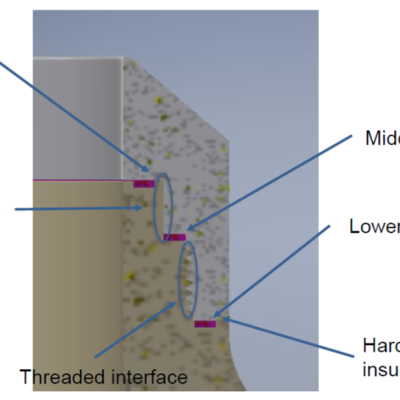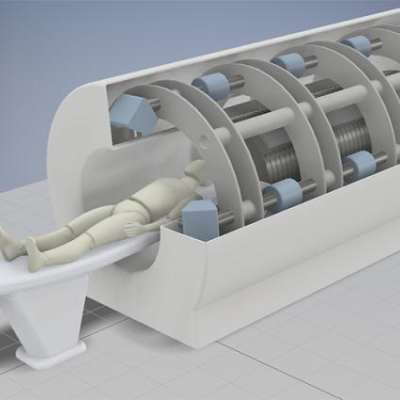LLNL researchers have designed and produced, both conductive and non-conductive porous electrode components manufactured for improved metal deposition, discharging, and fluid dynamics in hybrid flow batteries. This is achieved through Direct Ink Writing (DIW) additive manufacturing. The engineered 3D electrodes enable uniform current distribution and even metal deposition during charging…
Keywords
- Show all (74)
- Photoconductive Semiconductor Switches (PCSS) (9)
- Electric Grid (8)
- Imaging Systems (8)
- Carbon Utilization (6)
- Semiconductors (6)
- Materials for Energy Products (4)
- Optical Switches (4)
- Power Electronics (3)
- Sensors (3)
- Spectrometers (3)
- 3D Printing (2)
- Computing (2)
- Direct Air Capture (2)
- MEMS Sensors (2)
- Optical Sensors (2)
- Simulation (2)
- Synthesis and Processing (2)
- Precision Engineering (1)
- (-) Additive Manufacturing (3)
- (-) Particle Accelerators (2)

Improving the active material of the Zn anode is critical to improving the practicality of Zn-MnO2 battery technology. LLNL researchers have developed a new category of 3D structured Zn anode using a direct-ink writing (DIW) printing process to create innovative hierarchical architectures. The DIW ink, which is a gel-based mixture composed of zinc metal powder and organic binders, is extruded…

The approach is to build a high voltage insulator consisting of two materials: Poly-Ether-Ether-Ketone (“PEEK”) and Machinable Ceramic (“MACOR”). PEEK has a high stress tolerance but cannot withstand high temperatures, while MACOR has high heat tolerance but is difficult to machine and can be brittle. MACOR is used for the plasma-facing surface, while PEEK will handle the stresses and high…

LLNL’s approach is to use their patented Photoconductive Charge Trapping Apparatus (U.S. Patent No. 11,366,401) as the active switch needed to discharge voltage across a vacuum gap in a particle accelerator, like the one described in their other patent (U.S. Patent No.

LLNL researchers have designed and tested performance characteristics for a multichannel pyrometer that works in the NIR from 1200 to 2000 nm. A single datapoint without averaging can be acquired in 14 microseconds (sampling rate of 70,000/s). In conjunction with a diamond anvil cell, the system still works down to about 830K.

